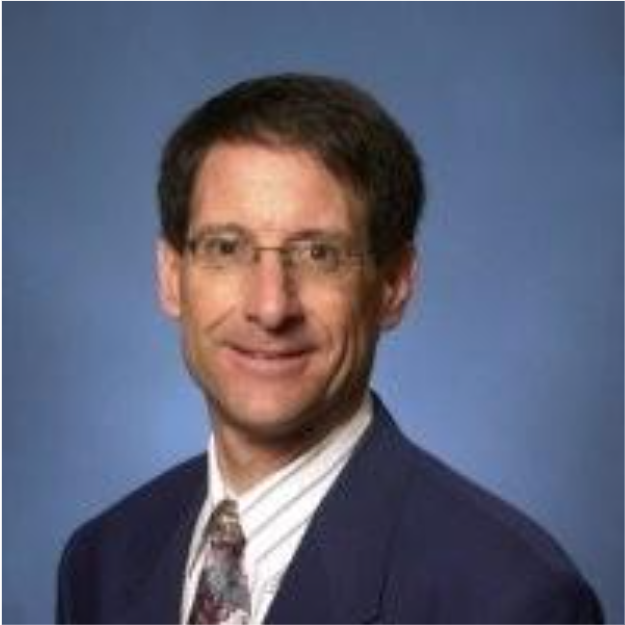
The Pulse by GRESB
The Pulse by GRESB is an insightful content series featuring the GRESB team, partners, GRESB Foundation members, and other experts. Each episode focuses on an important topic related to either GRESB, sustainability issues within real assets industry, decarbonization efforts, or the wider market.
- Watch on Youtube
- Listen on Spotify
- Listen on Apple Podcasts
ASHRAE Standard 100 in focus part 2: Steering the Standard
In this episode of The Pulse by GRESB, we return with part two of our deep dive into the development of the ASHRAE Standard 100 and its growing relevance for performance benchmarking. This continuation features insights from Jamie Kono (PNNL) and Glenn Friedman (Taylor Engineers) as they explore the technical evolution of efficiency and emissions targets, stakeholder engagement in standards development, and how ASHRAE’s work aligns with GRESB’s performance assessments. Tune in for a closer look at how energy standards are shaping the path to low-carbon, high-efficiency buildings. Find part one of the episode here.
Transcript
Can’t listen? Read the full transcript below. Please note that edits have been made for readability.
Parag: Welcome back to part two of this episode. I have with me Jamie Kono from PNNL, Pacific Northwest National Lab in the US, and Glenn Friedman from Taylor Engineering also based out of the US. And we’ll pick up our conversation where we left off. We will get into some of the technical details of Standard 100 development and where it’s going in the future. If you have not heard part one, please click on the link in the description. I wanted to talk about how the thresholds or the targets within the standard evolve over time. I wonder how does energy efficiency follow a pathway to ever better performance?
Jamie: So, Standard 100, a year ago, added in a metric for greenhouse gas performance – greenhouse gas emissions intensity. I had initially thought we would go the route of you can either meet a site energy use intensity target, or you can meet a greenhouse gas intensity target. But what the committee decided is that we should have both. You need to have some efficiency backdrop essentially that says you need to be so efficient. And you also need to have some kind of emissions target. The committee went with total emissions, direct emissions, and indirect emissions, generally known as Scope 1 and 2 emissions. But this idea of what is the goal regardless of how the grid changes over time or how you end up sourcing your different energy sources, you still want to have some kind of energy efficiency threshold that you meet so that you’re not, say, building a field full of solar panels that then powers some electric resistance heaters inside of a building.
That is not what we’re going for here. I don’t think that helps anyone out, except maybe makers of solar panels and electric resistance heating coils. And I talked with some coworkers at PNNL that are looking at what can we use as a potential kind of theoretical, maximum energy efficiency level? And it’s really hard. Within 100, the default targets were simply based off of the 25th percentile of the building stock, with the idea that at least 25% of buildings right now can meet that threshold, so it’s got to be at least feasible for most buildings to achieve that. But truly we can do better. So we have been doing some investigation, it’s very preliminary, of large scale modelling. Again it’s a US data set, the REStock and COMStock modeled data sets that look at different scenarios, essentially, different depths of retrofits within buildings.
If I had all the time in the world, I would love to really dig into those data sets and see if one can set some efficiency targets based on everything possible in the majority of buildings.
Let’s say you do only the very most cost effective, like controls related measures, lighting, upgrades, et cetera. What kind of EUIs are you seeing then? I would love to see the 2027 version of 100 be based around those.
Parag: Very interesting discussion we’ve had here. I’m going to end this with a note on the fact that the ASHRAE 100 Standards thinking, aligns very well with how GRESB is going in terms of performance assessment, as well, because we are looking at different aspects of performance at energy efficiency. In total, there is combustion on site, so Scope 1 emissions. There is renewable energy procurement and the decarbonization of the grid and how that interacts with your building and how maybe load shifting and things of that nature can really change the carbon profile of your building despite consuming the same amount of energy. These are emerging topics for GRESB as well. So it’s really good to have an engineering society work with them alongside, so we don’t have to reinvent the wheel here.
Obviously ASHRAE is a very international organization. It’s a non-governmental organization which has an international mandate. What is the sort of composition of this committee from a stakeholder perspective? Who gets involved? How do people get involved? How is this committee formed? The two of you obviously don’t work for the same company, so, could you talk a little bit about how the committee’s formed, how it works? How does the ASHRAE Standard process work?
Glenn: Well the ASHRAE standards follows the ANSI process, which requires that representative membership come from all of the variety of stakeholders out there. So within Standard 100, we have policymakers, we have designers, owners, operators of buildings, all of whom are members of the committee. So there is substantial stakeholder involvement in the development of the Standard 100 within the project committee. The ANSI process also requires public review of the standard by soliciting stakeholder feedback, making public announcements, and inviting peer reviews of all of the work that should be published, and a requirement for responses to all of those peer review comments to be taken into account. So it is a broad process that brings in a lot of the different stakeholders.
Parag: And I do want to highlight that having interacted with some of the standards myself, that it truly is a public process. Literally anybody can interact with the standards. And there is a reasonable expectation that your comments will be considered, if they’re germane to the topic. And this is, I think, part of what makes the standard quite durable. Now that GRESB has referred to ASHRAE 100, we’ve seen a lot of interest in our partners in the real estate space and in the finance space.
Looking at what ASHRAE is, who is part of ASHRAE? Where do these standards come from? What do they mean? How are they published? So I’m hoping that this means, of course, an increased interaction between the engineering side and the real estate and finance side, which I think will only benefit both because we can start talking to each other. Did you have any thoughts on how this might evolve? Are we looking for more stakeholders? How do we get them involved in this process?
Jamie: I could speak to that a bit. As Standard 100 gets more interest, we get more people reaching out asking what is the standard, why it may be worth to do the standard. And it’s really valuable to get all the different viewpoints incorporated into 100.
For example, we have a member of our committee from the American Society of Healthcare Engineers, which helps manage the energy efficiency of healthcare buildings, hospitals, et cetera across the US. And they’ve been really valuable in providing input on what defines a highly efficient hospital, for example. And perhaps it’s not so heavily based on the floor area or the EUI of a building, but instead it’s based more on the specific uses of the building, the ventilation demands of the building. How do we hold buildings accountable for their energy use while still making these kinds of targets achievable and realistic? That’s been such a valuable collaboration and just helps make our numbers and our standard better in general.
Glenn: And that speaks to the ASHRAE process as well, where there is an expectation of continuous maintenance for standards. So, as standards are used and as you say, the interaction between those bodies, the engineering world, that helps create or define some of these standards, interacting with the real estate world, who is actually trying to use these standards, there are a lot of opportunities for clarification, for improvement.
So, the ASHRAE process includes not only continuous maintenance, but opportunities beyond the public review process for suggestions and updates to the standard. So the standard project committee that oversees Standard 100 is a standing project committee, meaning that they exist over time. And we steadily have recommendations and continuous maintenance proposals put in from the public that we consider for improvements to the standard.
Jamie: if you’re interested, go to the ASHRAE website, look for Standard 100 committees. Join in on a conference either virtually or in person at some point and come see what we’re up to. If you have ideas, you might get pulled in like I did seven years ago. It’s a great group of people with interesting and diverse expertise. But even if you don’t have time to get sucked into this committee like I’ve been, you can submit comments and proposals for a Standard 100 committees as well as other ASHRAE committees. It’s very much a publicly facing group that gets a lot of feedback.
Parag: That’s about all the time we have for today’s episode of The Pulse. Thank you to you both, Jamie and Glenn for your time really appreciate your being here.
Jamie: Thank you.
Glenn: You’re very welcome. Thank you.
Parag: If you’ve enjoyed the episode , don’t forget to give this content a like, share and leave a comment. We are constantly developing new content and would love to hear from you which topics you would like us to bring into future episodes. You can get in touch with us at [email protected]. I’ve been your host, Parag Cameron-Rastogi, see you next time on The Pulse by GRESB.


